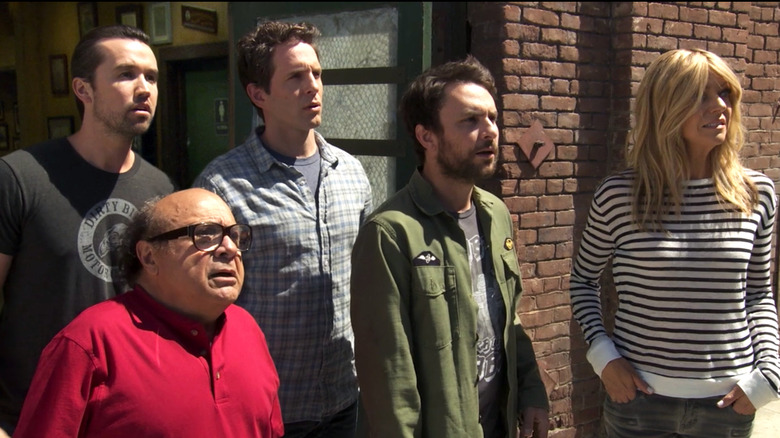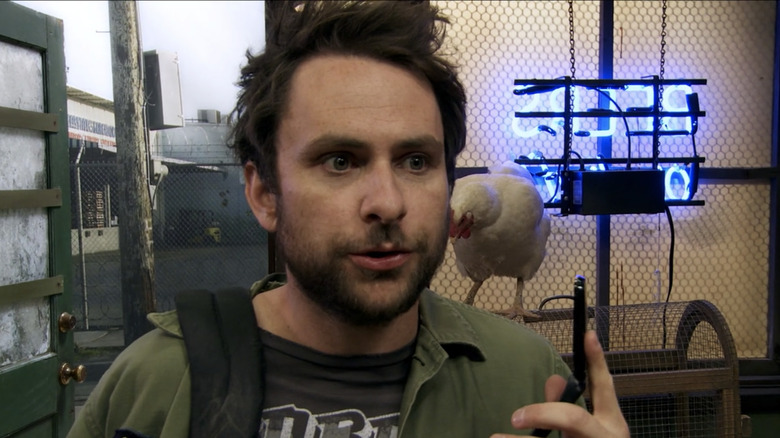It's Always Sunny's Most Intricate Sequence Only Took One Take To Nail
Television's longest-running live-action sitcom, "It's Always Sunny in Philadelphia," is renowned for its biting wit but rarely gets enough credit for its cinematic achievements. The show's expressive handheld camera movements imbue it with a distinctive style to match the offbeat humor. It is a key component of the series, and the creators' knack for experimentation has made it a fan favorite for over a decade.
Show creators Rob McElhenney, Glenn Howerton, and Charlie Day have worn many hats in the production of their series since the pilot, which they shot and directed on a budget of around $100 (via The Hollywood Reporter). As the series progressed, the overlapping cast and crew — which has largely remained the same since day one — continued to challenge themselves by setting new creative milestones. The creators reached their 10th season in 2015 and decided to make an episode that was filmed in a single shot, which quickly established itself as one of the best of the series — "Charlie Work."
In an interview with Collider, Day and Howerton discussed their inspiration for the one-take episode. "This was pre-'Birdman,'" Day clarified, "but everyone was talking about the one-shot 'True Detective' had done and we talked about how fun it would be to do a single shot, because we've never actually seen the characters go in and out of the bar." Sadly, their ambitions were stunted by a slight technical problem.
It felt like doing a play
"The thing is," Day laughed, "I forget that the bar — big spoiler — is a set, so to go in and out of it we usually have to cut."
It wasn't possible to get it all into one take, but some of the shots in "Charlie Work" are as long as seven minutes. This made shooting the episode "[feel] like doing a play," in Howerton's words. The actors have a clear affinity for stage-acting, illustrated by the episode of the fourth season, "Dayman," wherein the characters perform a musical. Shooting without the safety of a cut worked like a shot of adrenaline, suffusing the actors' performances with energy. Perhaps this is why they were able to shoot the longest sequence "without screwing up" on the very first take. Day said:
"I have to give credit to Adam Sklena, our camera operator who's been with us since the very first season — look, we didn't have special dolly tracks or a pre-programmed rig. This is a man holding a camera who had to walk backwards, most of the time while I'm walking forwards, and we actually got it without screwing up on take-one."
"It's Always Sunny" is defined by its handheld camera, and "Charlie Work" is no exception. Tracking the actor's movement does create a technical challenge, though, one which is usually overcome by use of dollies and rigs.
Day tips his hat to their camera operator Adam Sklena, who maintained the stylistic integrity of the series by shooting the episode entirely by hand. Sklena has been behind the lens of "Sunny" since the first season and has played an integral part in giving the series its characteristic visual texture. That he has remained on the crew all these years is a testament to the excellent working relationship that the "Sunny" team has developed on both sides of the camera.

